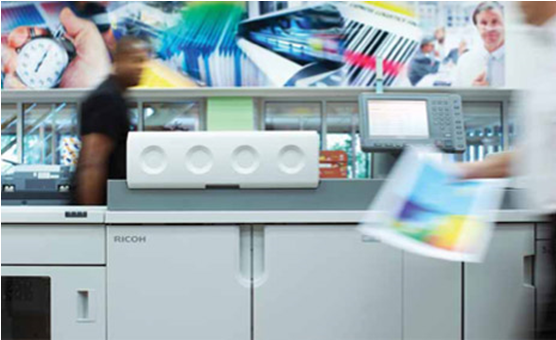The benefits of digital printing
The digital print equivalent came onto the market in the late 20th century.
The first digital colour printing press- the Indigo- was invented by Benny Landa in 1993 and revolutionised the entire printing industry overnight. This amazing technological development meant that for the first time customers would be able to order a short run AND very high-quality printing straight from a desktop at short notice. Previously, large run printing runs were the norm which usually required much longer lead times, high set up costs and pre-agreed artwork for the full run.
HP invested $100 million in Indigo back in 2000, an investment which swallowed up 13% of Indigos shares. A year later on September 6th, HP purchased the remaining shares for $629 Million.
Quoted at the time of the takeover, Landa said:
'Our vision has always been to lead the printing industry into the digital era and to see Indigo technology pervade the commercial market. Now, as part of HP, that goal is in sight'

SO HOW DOES DIGITAL PRINTING WORK?
Digital printing begins with the creation of a document, which contains both the words and the images that will print onto the page. The entire image which is to be printed is re-created byactually being drawn out with tiny dots. DPI (dots per inch) describes the resolution of the printing, the higher the DPI, the clearer and more detailed the image.
Prior to printing, the image/text is formatted into an electronic document file. These files are called Bit Maps, of Raster Image Files. These files take the form of BMP, TIFF, GIF or JPEG files. Tounderstand these files fully, imagine the image you want to print is entirely made up of X & Y co-ordinates. These image files become a set of co-ordinate instructions to the printer, placing the co-ordinates where they need to be to create the desired image.
WHAT ARE THE ADVANTAGES OF DIGITAL PRINT?
There are many advantages to printing large and small format items digitally, rather than the more traditional litho print method:
Cost effective – without the requirement to make a plate for every image, very small quantities of different types of print can be printed without high set up costs making digital print extremely cost effective
Fast Turnaround – Traditional printing forms can take a long time to set up, digital presses however can be set up and ran incredibly quickly, here at Photoline this means same day!
Environmentally Friendly- Digital printing does not involve solvents and other chemicals, which is better for the environment. And as you can print only the quantities that you need no matter how small, this also reduces waste and energy consumption. At Photoline we take our environmental responsibility seriously and ensure our processes comply with our ISO14001 certification.
Personalisation – Digital printing allows for very small print runs which in turn allows printed items to be more bespoke or personalised without incurring high set up charges. Printed items can become unique with specific customer names, images, text , URLs or contact numbers etc . This personal touch helps improves response rates whilst traditional printing methods meanwhile only allow for one 'blanket run'
Outstanding Quality – Digital printing today produces outstanding quality results at incredibly fast turnaround times.
Large and Small- All the benefits of digital printing applies to both small and large format print, so whether you need small runs of leaflets, brochures, invitations, posters or banner stands you can get all these printed superfast digitally.
Photoline's small and large format digital printing presses work same day and super fast to provide outstanding quality bespoke print for a wide range of local and UK clients. Please see ourwebsite for our full range of digital print solutions. www.photoline.co.uk